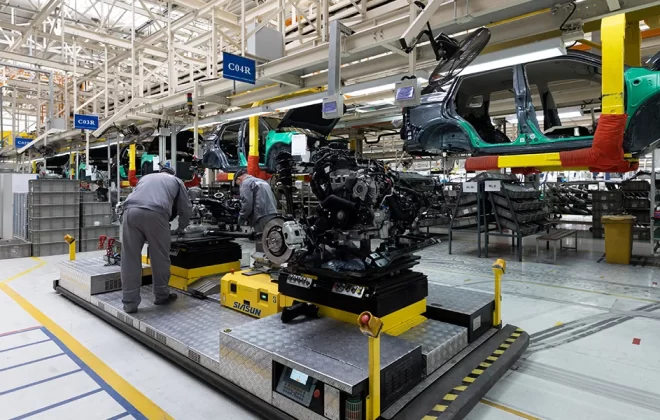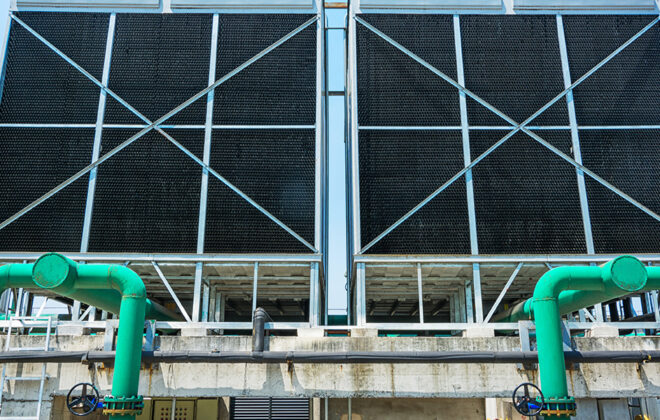4 Major Types of Fan Blade in Centrifugal Fans: A Selection Guide to Keep the Air Moving
Get an Insight of Fan Blade In Centrifugal Fans!
An Industrial centrifugal fan is a blower whose primary function is to supply a large flow of air or gas to various industrial processes. They are electric fans with wheels and blades that move a precise amount of air or gas from one location to another. Industrial Centrifugal Fans have proven to be an important piece of equipment that is designed, installed, and used for a variety of work efficiency purposes. They have been widely used in industries like Glass, Textiles, Telecommunications, Food processing, Agriculture, warehouses, Cement, etc.
Centrifugal blowers are commonly employed in boiler fans, furnace combustion blowers, rolling mill dust collectors, bag filters, suction blowers, and exhaust blowers. The primary function of this sort of blower is to generate enough pressure to suck in, circulate, and release new air. It is also in charge of producing high-pressure and forceful airflow from a small amount of air/gas.
Blades are the parts of the fan that create the wind when a motor is rotating. There are many types of blades in centrifugal fans and each one is designed to work efficiently at doing one specific job. It’s important to understand how each type of blade works, as well as their various pros and cons.
As trusted and experienced centrifugal fan manufacturers in Gujarat, we have listed down 4 major types of fan blade in centrifugal fans.
1). Forward Curve Fan Blade in Centrifugal Fans
A Forward Curved Fan blade in centrifugal fans has a large number of low blades that face the direction of rotation. The flow produced by this kind of impeller is in a parallel direction. The forward curve of the blade transmits kinetic energy to the air, which must be converted into static pressure by a scroll housing. The input power characteristic of any given constant speed increases as flow increases from zero to maximum.
Forward-curved fan blades are commonly employed in compact installations to offer substantial air volumes at low running speeds. They are also appropriate for applications requiring constant airflow or constant pressure supply. Forward-curved fans are utilized in a wide range of applications, including home boilers, warm air heaters, radiant heat tube heaters, refrigeration, heating fan coil assemblies, and many others.

2). Backward Curve Fan Blade in Centrifugal Fans
Backward curved fan blade centrifugal fans often have fewer longer blades that face the opposite directions of rotation. The blades curve backward from the inner to the outer edge, relative to the rotational direction, and can be plate or airfoil-shaped.
Flow is produced in a radial direction by this type of impeller because the impeller creates static pressure across the longer length of the blade. A positive pressure is generated on the front side of the blade, forcing the air outwards, while a negative pressure is generated on the reverse side of the blade.
Backward curved fan blade centrifugal fans are often used in high-efficiency, high-pressure applications when overall system efficiency is important or scroll housing is not required. Backward curved fans are used in a variety of applications such as high-pressure condensing (premix) boilers, extract ventilation systems, fume extraction systems, gas burner systems, heat recovery systems, and many more.

3). Radial Fan Blade in Centrifugal Fans
A Radial Fan Blade in centrifugal fans is a mechanical device with an impeller powered by an electrical motor. The impeller rotates independently and directs the air. This air that it works with is normally sucked from the sides of the fan and blown through the fan’s outlet.
The air hits the fan wheel, spins at the correct angle, and is accelerated by radial flat blades on the impeller in a radial fan. The name comes from the fact that the accelerated air is ejected radially. The airflow is caused by the centrifugal force generated by a rotating column. These fans can be belt or motor-operated.
These are medium-flowing high-pressure fans. Radial-bladed fans are ideal for dusty industrial applications or settings with gas or moisture in the air.

4). Airfoil Fan Blade in Centrifugal Fans
The Airfoil Fan Blade in centrifugal fans is essential for conveying a flow to any kind of object. In industrial design, an airfoil is a surface whose curvature produces a greater lift than what is generated by a body of fluid that isn’t fluidly attached to it. Airfoil fans also tend to be more efficient because they move air more quickly through the fan housing.
The airfoil fan blade in a centrifugal fan has outstanding aerodynamic properties and design efficiency of up to 89%. It can be employed in medium to high-pressure industrial applications that require clean air or low dust concentrations. Four distinct series for various wheel types provide selection versatility. Because of the double-skin airfoil, the blades are susceptible to abrasive dust and should only be used in low dust loads.

Conclusion for Fan Blade in Centrifugal Fans
According to MDPI, Enhancing Efficiency of Industrial Centrifugal Fans Using Blade Adjustment Mechanism
Centrifugal fans come in various sizes and types, for use in several industries. Each type of blade used in these centrifugal fans serves a specific purpose.
When choosing a centrifugal fan, it’s important to know as much as possible about the model you plan to buy. At Blowerfab- the most trusted Centrifugal Fans Manufacturer in Gujarat, we always hope that our customers make the right choice for their intended use so they can enjoy years of reliable performance from one of our quality fans.
Related Posts
Recent Posts
- SYMBIOSIS Blowerfab Delivers State-of-the-Art RC Fans to ArcelorMittal Nippon Steel India, Enhancing Industrial Efficiency
- Hubergroup Elevates Production Capabilities Using SYMBIOSIS Blowerfab’s Stainless Steel Blowers
- SYMBIOSIS Blowerfab Supplies Tailored Blower Solutions to Antony Lara’s Waste Treatment Project
- Solving Ventilation Challenges in the Ceramic Industry with Symbiosis Blowerfab
- Commercial Kitchen Ventilation Systems: A Complete Guide for Restaurants




